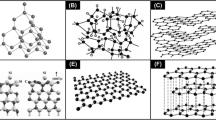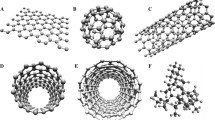Abstract
The goal was to manufacture carbon/carbon (C/C) composites through a unique procedure with improved biocompatibility and reduced debris release. C/C composites were prepared by chemical vapor deposition, and their biological properties were analyzed. With regard to mechanical properties, compressive strength/modulus was 219.1 MPa/9.72 GPa, flexural strength/modulus was 121.63 MPa/21.9 GPa, and interlaminar sheer was 15.13 GPa. Biocompatibility testing revealed: (1) the extract liquid from the C/C composites had no effect on cell proliferation; (2) the extract had no impact on micronucleus frequency as compared with the control groups (P > 0.05); (3) in vivo, there was mild tissue inflammation after implantation within the first 2 weeks, but there was no significant difference compared with the control group (P > 0.05); (4) the implants were well integrated into the host tissue, and debris was limited. The tested samples have excellent biocompatibilities and reduced release of debris. The demonstrated changes in manufacturing procedures are promising.



Similar content being viewed by others
References
Shabalovskaya SA. Surface corrosion and biocompatibility aspects of nitinol as an implant material. Biomed Mater Eng. 2002;12:69–109.
Ali MS, French TA, Hastings GW, Rae T, Rushton N, Ross ER, et al. Carbon fibre composite bone plates. Development, evaluation and early clinical experience. J Bone Joint Surg Br. 1990;72:586–91.
Adams D, Williams DF. The response of bone to carbon–carbon composites. Biomaterials. 1984;5:59–64.
Pesáková V, Smetana K, Sochor M, Hulejová H, Balík K. Biological properties of the intervertebral cages made of titanium containing a carbon-carbon composite covered with different polymers. J Mater Sci: Mater Med. 2005;16:143–8.
Pesáková V, Smetana K, Balík K, Hruska J, Petrtýl M, Hulejová H, et al. Biological and biochemical properties of the carbon composite and polyethylene implant materials. Biomechanical and biological properties of the implant material carbon-carbon composite covered with pyrolytic carbon. J Mater Sci: Mater Med. 2003;14:531–7.
Pesáková V, Klézl Z, Balík K, Adam M. Biomechanical and biological properties of the implant material carbon-carbon composite covered with pyrolytic carbon. J Mater Sci: Mater Med. 2000;11:793–8.
Liao S, Wang W, Uo M, Ohkawa S, Akasaka T, Tamura K, et al. A three-layered nano-carbonated hydroxyapatite/collagen/PLGA composite membrane for guided. Biomaterials. 2005;26:7564–71.
Adam F, Hammer DS, Pfautsch S, Westermann K. Early failure of a press-fit carbon fiber hip prosthesis with a smooth surface. J Arthroplasty. 2002;17:217–23.
Li PT, Lee YC, Elangovan N, Chu ST. Mouse 24p3 protein has an effect on L929 cell viability. Int J Biol Sci. 2007;3:100–7.
Vikram A, Tripathi DN, Ramarao P, Jena GB. Evaluation of streptozotocin genotoxicity in rats from different ages using the micronucleus assay. Regul Toxicol Pharmacol. 2007;49:238–44.
Sudheer AR, Muthukumaran S, Devipriya N, Devaraj H, Menon VP. Influence of ferulic acid on nicotine-induced lipid preoxidation, DNA damage and inflammation in experimental rats as compared to N-acetylcysteine. Toxicology. 2008;243:317–29.
Moran LJ, Noakes M, Clifton PM, Norman RJ, Fenech MF. Genome instability is increased in lymphocytes of women with polycystic ovary syndrome and is correlated with insulin resistance. Mutat Res. 2007;639:55–63.
Acknowledgment
We would like to thank Shuolun Ruan for providing valuable feedback and proofreading the manuscript.
Author information
Authors and Affiliations
Corresponding author
Additional information
Guo-Hui Wang and Shu Yu these two authors contributed equally to this work.
Rights and permissions
About this article
Cite this article
Wang, GH., Yu, S., Zhu, SH. et al. Biological properties of carbon/carbon implant composites with unique manufacturing processes. J Mater Sci: Mater Med 20, 2487–2492 (2009). https://doi.org/10.1007/s10856-009-3812-3
Received:
Accepted:
Published:
Issue Date:
DOI: https://doi.org/10.1007/s10856-009-3812-3




